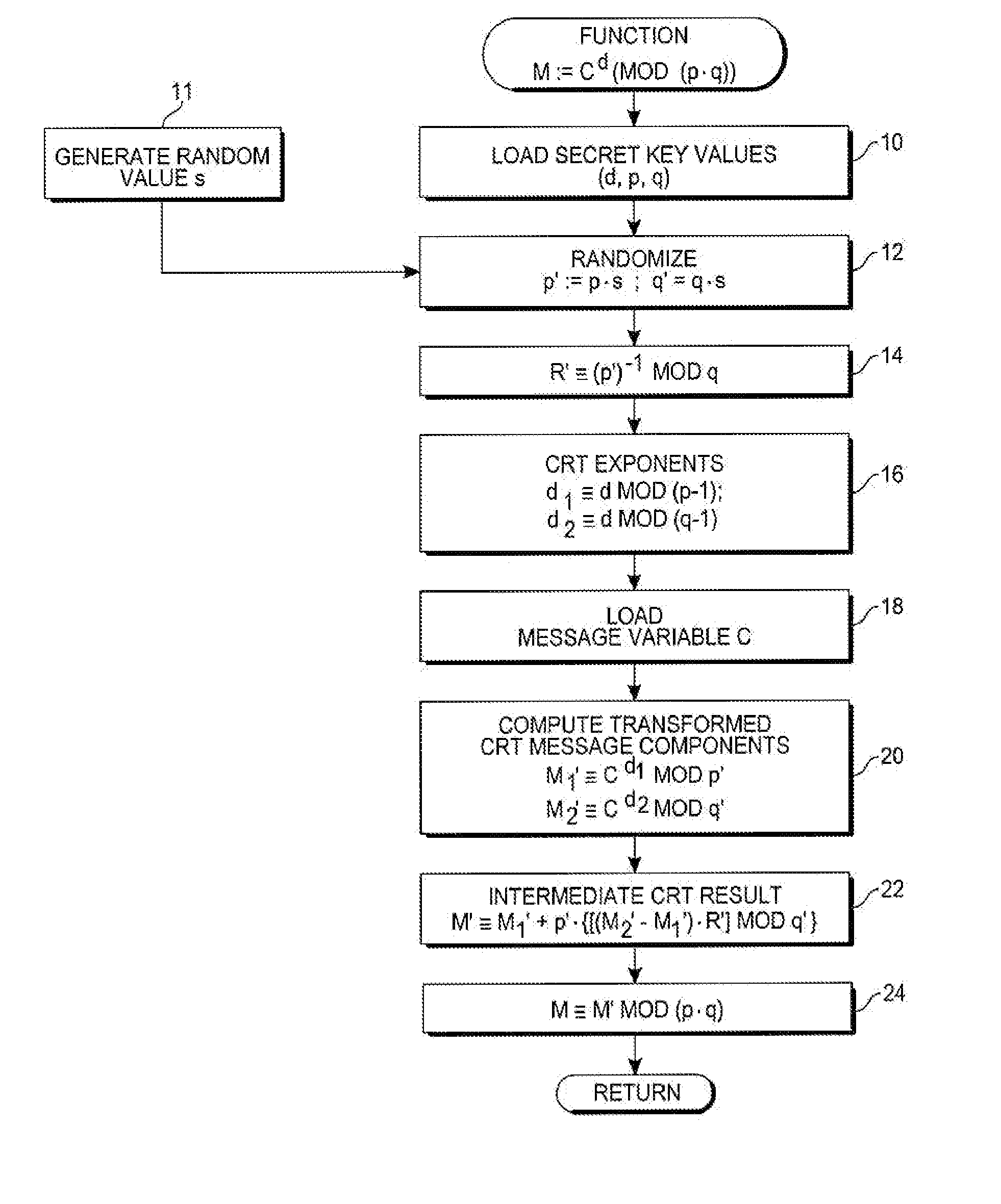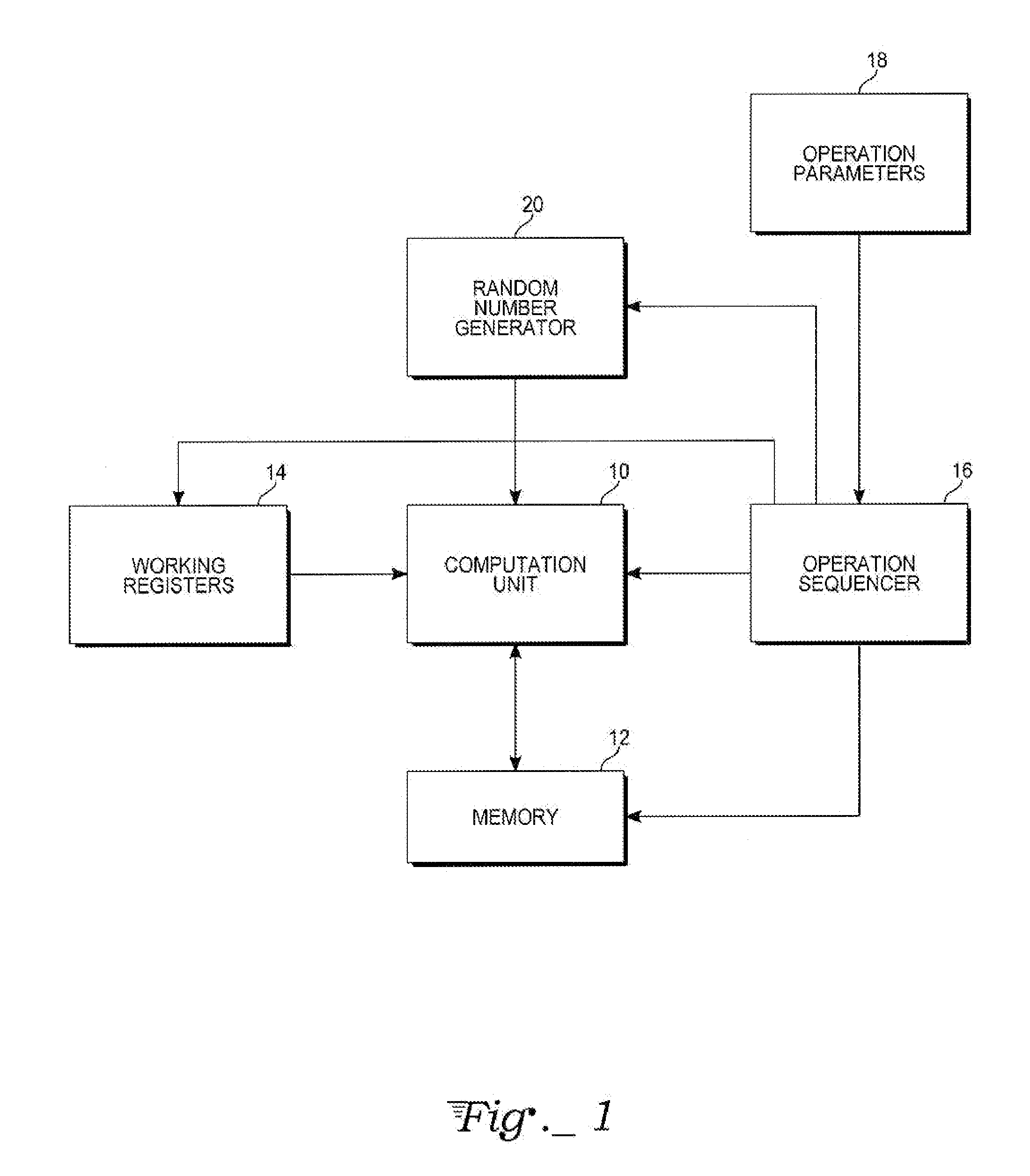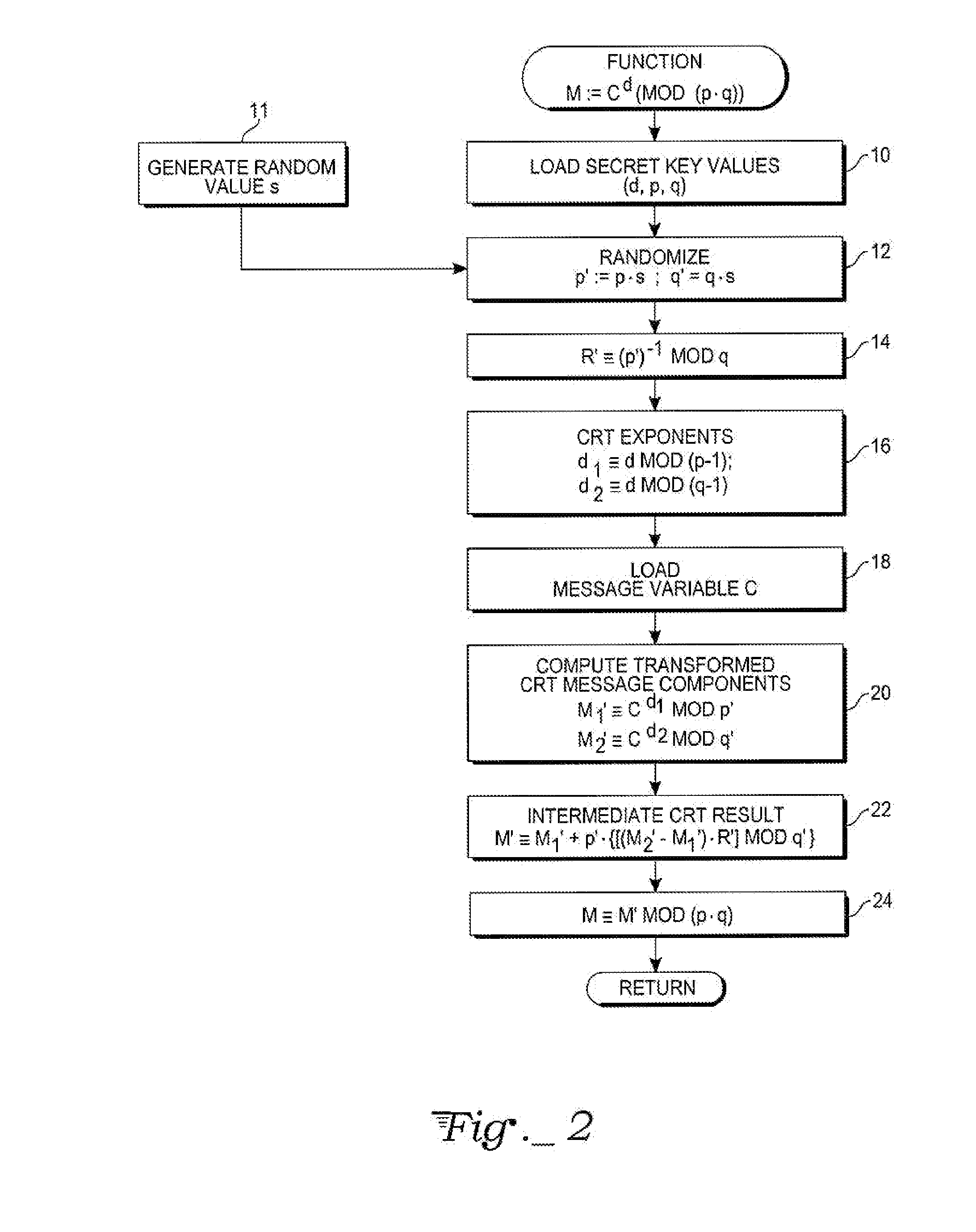Chinese remainder theorem - based computation method for cryptosystems
a computation method and remainder theorem technology, applied in the field of chinese remainder theorem based computation method for cryptosystems, can solve the problems of many variants that can be quite complex and computationally intense, and achieve the effect of less computational intensity and substantial security against cryptanalysis
- Summary
- Abstract
- Description
- Claims
- Application Information
AI Technical Summary
Benefits of technology
Problems solved by technology
Method used
Image
Examples
Embodiment Construction
[0013]With reference to FIG. 1, the cryptographic method of the invention may be implemented in a wide variety of digital processing systems, logic circuitry or electronic hardware, or by executing an equivalent firmware or software program in a data processor or computer. Exemplary computational processor hardware in accord with the present invention may include an arithmetic-logic unit (ALU) 10, or similar computational circuitry containing a hardware multiplier, for executing numerical operations, including modular exponentiation, upon provided data. The ALU 10 generally has access to a memory (RAM) 12 and various working registers 14. An operation sequencer 16 comprises logic circuitry for controlling the ALU, including data transfers to and from the memory 12 and registers 14, in accord with firmware or software instructions for the set of operations of a cryptographic algorithm. operation sequencer 16 may access operation parameters in the form of pointers stored in registers ...
PUM
 Login to View More
Login to View More Abstract
Description
Claims
Application Information
 Login to View More
Login to View More - R&D
- Intellectual Property
- Life Sciences
- Materials
- Tech Scout
- Unparalleled Data Quality
- Higher Quality Content
- 60% Fewer Hallucinations
Browse by: Latest US Patents, China's latest patents, Technical Efficacy Thesaurus, Application Domain, Technology Topic, Popular Technical Reports.
© 2025 PatSnap. All rights reserved.Legal|Privacy policy|Modern Slavery Act Transparency Statement|Sitemap|About US| Contact US: help@patsnap.com



